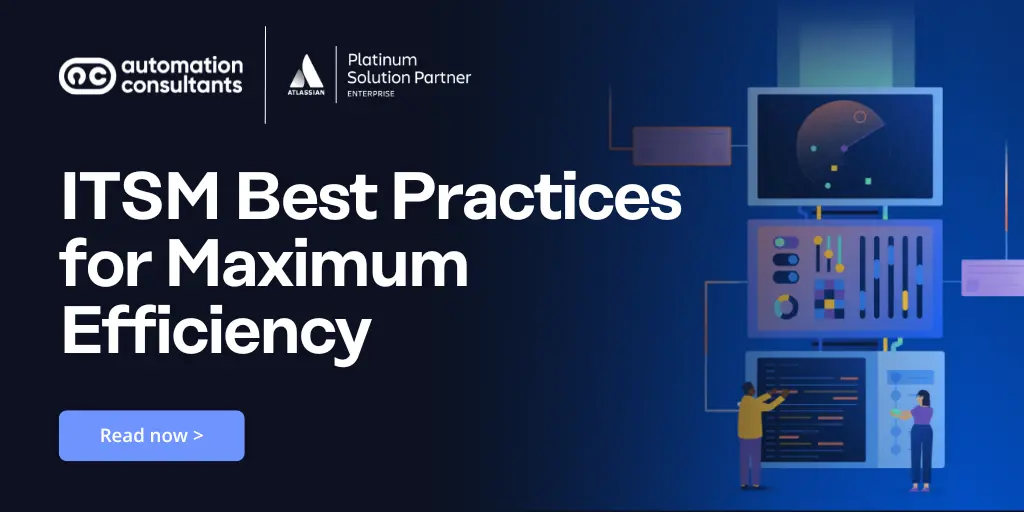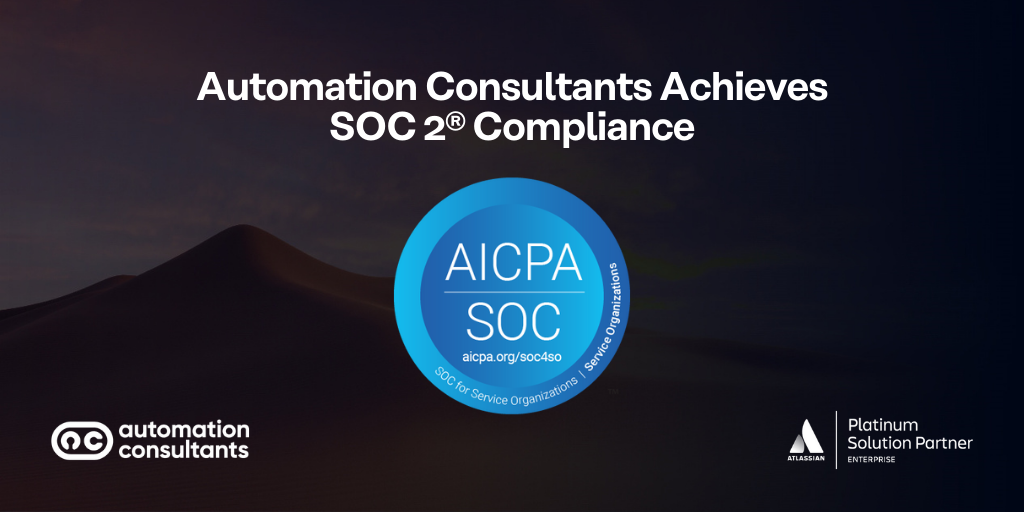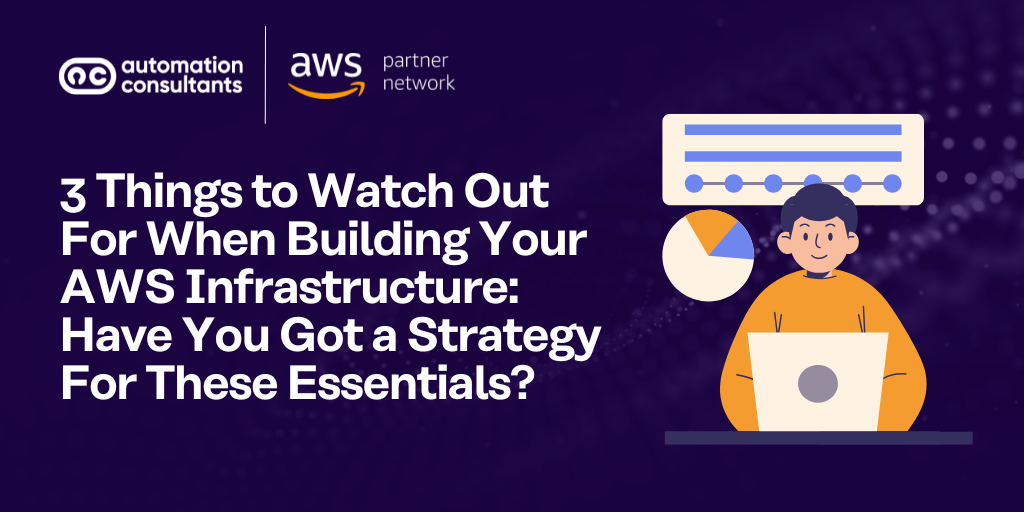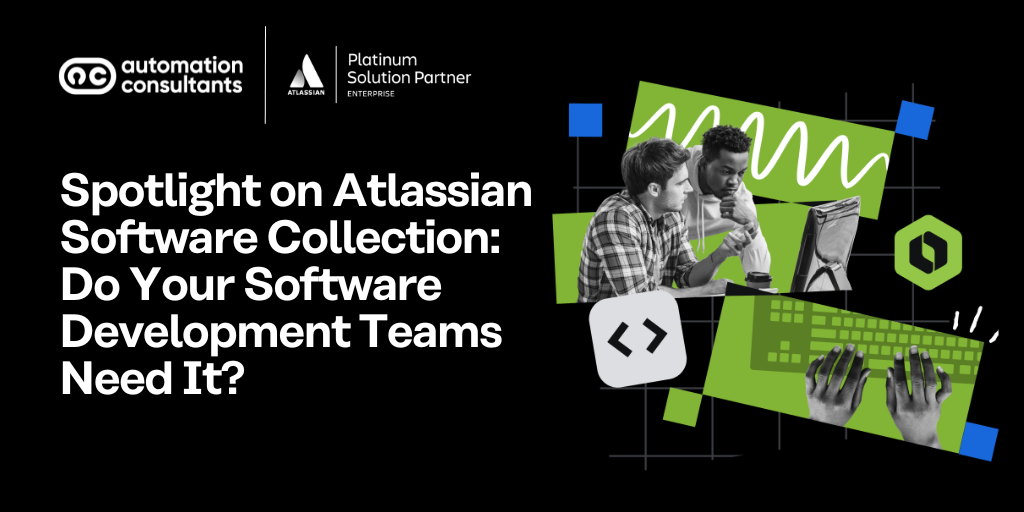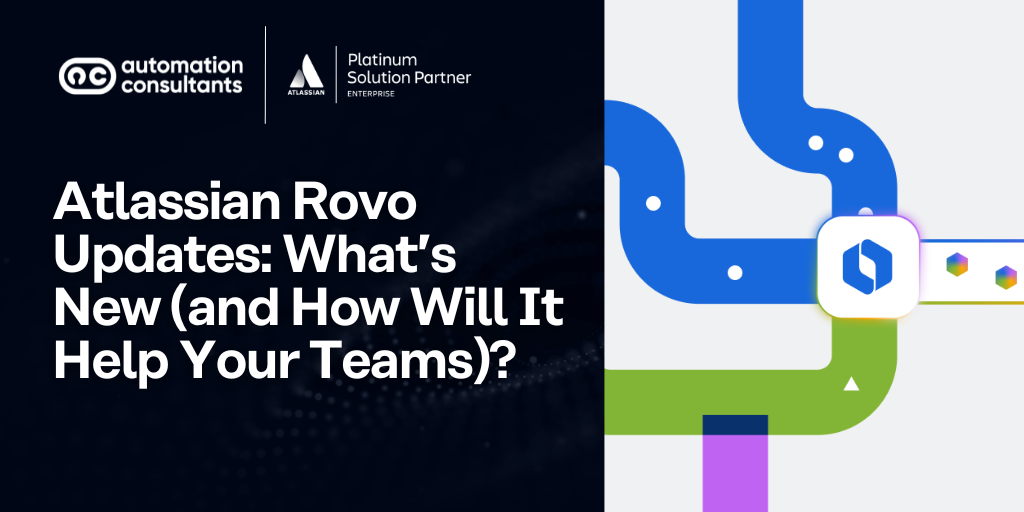As you’re probably well aware, the IT Service Management (ITSM) landscape is changing at some pace.
Employee and customer expectations are increasing. Artificial Intelligence (AI) is being introduced in the form of virtual agents and other features. ITSM tech stacks are evolving.
With so much change on the horizon, it can be valuable to step back and remind ourselves of the core principles of ITSM best practices. When managed successfully, keeping guiding principles in mind and supported by the right tooling and processes, IT departments can deliver great value across an organisation.
So, in this guide to IT service management , let’s take a closer look at:
The definition of IT Service Management and how it adds value to an organisation
And, of course, a little more besides. (As a dedicated ITSM consultancy with over two decades’ experience, we always have a lot to say!)
What is IT Service Management (ITSM) and why is it important?
IT Service Management is more than just project management. It is end-to-end management of IT services and covers a range of processes that determine how IT is used and – crucially – how it can support organisational objectives.
These processes look at the design, delivery, management and continuous improvement of Information Technology.
Let’s take a moment to look at some of the benefits of this approach:
- Enhanced service delivery: By adopting ITSM, organisations can ensure that IT services are delivered more efficiently and are closely aligned with business requirements.
- Cost efficiency: ITSM promotes resource optimisation and efficient asset management of hardware, software and infrastructure. It tracks everything to make sure resources are being used properly and are well-maintained to reduce unnecessary expenditures and enhance cost efficiency.
- Improved user experience: Now this is a key one. Happy end-users result in greater productivity and job satisfaction, whilst satisfied end-customers translate into stronger sales, increased customer retention and a good reputation. The challenge, of course, is not to only meet their expectations, but to exceed them.
- Operational agility: ITSM provides a framework for quickly adapting to changes in business needs, enhancing an organisation’s agility. We’ve talked extensively about the benefits of Agile working, and how working in an Agile way can enable organisations to pivot quickly, adapt to changing requirements and, ultimately, experiment and learn for long-term success.
Popular ITSM processes (and what they mean)
Now, ITSM processes are the backbone of effective IT Service Management. Without them, organisations may struggle to provide structured ways to deliver services and manage operations.
Core ITSM processes include:
Service catalogue
A centralised and structured repository of all the IT services offered by an organisation, which acts as a communication tool between the IT team and the users or customers. This helps users understand what services are offered and how to request them.
Incident management
Restoring normal service operations as quickly as possible after an incident, minimising the impact on business operations.
Problem management
Focusing on identifying and managing the root causes of an incident, to prevent reoccurrence.
Change management
Ensuring that changes to IT services are managed efficiently and effectively, minimising disruption and maintaining service quality. A strong change management process also contributes to a wider culture of standardisation, as requests are handled consistently.
Service request management
Handling routine service requests, such as password resets or hardware requests, and providing timely resolutions.
Service level agreement management
Negotiating and managing Service Level Agreements (SLAs) to ensure that IT services meet the agreed-upon standards of performance.
Configuration management
Maintaining information about configuration items required to deliver IT services, and ensuring data is accurate and up-to-date.
Knowledge management
Creating, sharing and distributing knowledge within your organisation and with end-users and customers, to resolve requests and and encourage self-service.
IT Service Management Frameworks
To effectively implement a robust ITSM, organisations typically adopt one or more frameworks that provide structured guidance and best practice. The most prominent ITSM frameworks include:
- ITIL (Information Technology Infrastructure Library): ITIL is the most widely recognised ITSM framework, offering detailed best practices for IT Service Management. It focuses on aligning IT services with business needs and emphasises continual service improvement. Learn more about the differences between ITIL and ITSM.
💡 Tip!
If you’re considering an ITSM tooling shift and comparing products, look out for which ITIL processes each platform supports.
Leading tools should be PinkVERIFY-certified for ITIL 4 (currently the most recent ITIL certification) practices.
COBIT (Control Objectives for Information and Related Technologies): COBIT provides a comprehensive framework for managing and governing enterprise IT environments.
ISO/IEC 20000: This is an international standard for IT Service Management. It provides requirements for an organisation to establish, implement, maintain, and continually improve an ITSM system. ISO/IEC 27001, meanwhile, relates to information security.
FitSM: A more lightweight ITSM standard, FitSM offers a pragmatic approach suitable for organisations looking for a less complex alternative to ITIL or ISO/IEC 20000.
Choosing the right framework will depend on your organisation’s size, complexity and specific needs.
If you’re unclear about how to approach frameworks and certifications, why not turn to an experienced ITSM consultancy to advise you? With decades of experience in ITSM best practices, we can advise you how to optimise your ITSM tooling and processes to ensure you’re compliant with your framework of choice and that your service offering is as efficient and impactful as possible.
Essential ITSM software tools
Your tech stack should support all of the processes of ITSM.
For example, all leading ITSM platforms should provide branded service desks to handle requests. They should also include comprehensive, intuitive knowledge base solutions. And look out for ITSM tools which integrate with software development platforms (such as the relationship between Jira Service Management and Jira), for seamless incident escalation and problem management.
Discover more about Jira Service Management
Download our free Jira Service Management overview cheat-sheet to find out more about how you can transform your company with high-velocity service management.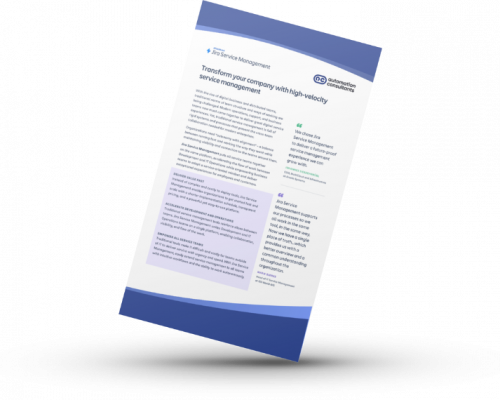
On that note, if you’re evaluating your ITSM software, we’d encourage you to take a look at our series comparing Jira Service Management with other popular tools. How do they stack up against one another?
Read now:
The future of ITSM tools
Alongside what your IT Service Management platform can do today, it’s prudent to consider what it will deliver tomorrow. As we mentioned at the top of this piece, ITSM technology is in flux, and vendors should be seeking ways to continuously innovate and deliver increasing value.
Unsurprisingly, Artificial Intelligence (AI) is currently a core area of focus for most tech providers. Almost all the ITSM systems that we encounter include some form of virtual agent or AI-enhanced service management. We’ll be keeping an eye on how this use of AI is extended and enhanced over the coming months and years, as it’s an area rich in possibilities.
Atlassian has delivered a number of AI innovations since it launched Atlassian Intelligence last year (May 2023). From virtual agent capabilities to AI-powered work breakdowns, you can catch up on our series of Atlassian Intelligence updates, starting with the most recent instalment here.
And if you’re unsure how to optimise your use of AI in ITSM, why not seek guidance from an expert consultancy? Here at Automation Consultants, we provide free 30-minute consultations, so you can talk to us about your challenges, objectives and questions. Sign up for yours today to discover the difference with AC.
Best Practices for IT Service Management (ITSM)
Implementing ITSM best practices can significantly enhance the efficiency and effectiveness of your IT service delivery. These principles should form the bedrock of all successful ITSM strategies.
Adopt a service-oriented mindset
Shift from a technology-centric approach to a service-oriented one. This hinges on the understanding that IT services exist to meet the needs of the business and its users. In other words, you want to focus on outcomes rather than outputs, and align your IT services with organisational goals.
Implement a strong governance framework
It’s crucial to establish clear roles, responsibilities and accountability within your ITSM processes. This governance aligns your IT services with those overarching organisational objectives, whilst also ensuring your processes comply with relevant regulations and standards.
Embrace automation
Automate repetitive tasks to enhance efficiency, reduce manual errors and save your teams’ time. From incident management and request fulfilment, to change management and knowledge base curation, automating regular, manual activity can free up your team for higher value, more strategic work.
Develop a Knowledge Management System (KMS)
Create a centralised repository of knowledge to provide solutions to common challenges and encourage self-service. When well maintained, a KMS can improve incident resolution times and support continuous improvement.
Regularly review and improve processes
Continuously monitor and review your ITSM processes to identify areas for improvement. Use metrics and KPIs to assess performance and make data-driven decisions to enhance efficiency.
Engage in continuous training and development
Invest in the ongoing training and development of your Service Desk and IT teams. Ensure they are up-to-date with the latest ITSM practices and technologies to maintain a high level of expertise and service quality across your organisation.
Foster collaboration across teams
Encourage collaboration between IT and other departments. Breaking down silos and promoting cross-functional teamwork can lead to more effective problem-solving and service delivery. Again, this is where integrated tooling can be invaluable for enhanced incidence escalation and resolution. Think of the integration piece between Jira Service Management and Jira, which promotes a seamless flow of information and collaboration.
Emphasise customer satisfaction
Regularly gather feedback from users and stakeholders to gauge satisfaction with IT services. Use this feedback to drive improvements and risk management. Ensure that IT services meet the evolving needs of your organisation and end users and customers. Doing this will ultimately contribute to long-term success, with enhanced user productivity and customer satisfaction.
Align ITSM with business strategy
We’ve touched on this before – the idea that ITSM should be closely aligned with overall organisational objectives. When your ITSM initiatives are linked to your broader business strategy, it can help to demonstrate the value of IT Service Management to senior stakeholders and across your organisation, and secure support for future initiatives.
Adopt a flexible ITSM framework
As you’ll know from our list earlier on in this post, there are a number of ITSM frameworks available. Choose one which suits your organisation’s size, complexity, and needs. Be flexible in your approach and adapt the framework as your organisation evolves.
How Automation Consultants can help with the implementation of ITSM best practices
Implementing ITSM can be complex, and that’s where we come in – a team of highly skilled, experienced and dedicated consultants. We specialise in helping organisations optimise their ITSM strategies and practices – and here’s a flavour of how we could help you to do the same:
- Tailored ITSM solutions: We provide customised solutions that align with your organisation’s unique requirements and goals.
- Specialist support: Our team of experts will guide you through every step of your ITSM implementation journey.
- Advanced tooling expertise: As an Atlassian Platinum Solution Partner, we can optimise your techstack and extend the capability of your tools to streamline your processes, reduce manual workloads and enhance service delivery efficiency.
- Continuous improvement: ITSM is not solely about technology and processes – it also requires the right environment to thrive. With our support, you can establish a culture of continuous improvement and collaboration, to ensure your organisation regularly reviews and enhance its ITSM practices to keep pace with changing needs.
Does this sound like the guidance and support you need?
If so, do get in touch with us today. Whether you’d benefit from a free 30-minute consultation, or would like to learn more about our services, do reach out to us today.

